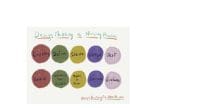The written word is posited to be one of the earliest forms of innovation, yet oral and visual storytelling goes back even further. That is because stories connect people across cultures and generations. For nurses to connect with patients, communities, administrators, or policy makers, we need to emphasize storytelling’s importance in healthcare—and innovation—and teach nurses the fundamentals of the art of telling stories earlier in their careers. Our guest contributor this month is Nicole Sunderland, clinical practice nurse leader at Penn State Health Milton S. Hershey Medical Center and adjunct professor at Penn State University Ross and Carol Nese College of Nursing. Dr. Sunderland argues that storytelling is an integral component of education, especially for undergraduate nursing students. She details how the application of storytelling can be integrated into the clinical mentorship of our students. Finally, Dr. Sunderland maps out how students can use various storytelling techniques to create an engaging clinical story that can be shared during patient presentations, to communicate policy changes, and even to provide better patient care.
Many nursing students experience a range of emotions during clinicals. Some of these include stress, anxiety, and depression. Some students worry about how they will behave in clinical settings. They frequently observe events involving delicate themes like codes, organ donation, interpersonal problems, and novel circumstances they have never encountered. Students’ anxiety levels and maladaptive coping mechanisms, such as denial, behavioral disengagement, venting, and self-blame, were positively correlated in a study by Masha’al and colleagues. Storytelling was incorporated to help foster connection with patients, decrease anxiety and other coping behaviors, create a positive clinical experience.
Although a program called Tales From the Bedside exists in graduate nurse residency programs and includes panel discussions and small group work, limited research exists on how storytelling helps nursing students. Throughout history, numerous societal and cultural standards have incorporated storytelling. Mendoza describes various historical forms of storytelling, including songs, chants, poetry, and paintings. Depending on the culture, these have been handed down from one generation to the next. According to Garmston, some organizational leaders share their stories through these channels to help form narratives, encourage followers, and establish their influence over the people they serve. People can connect and engage with others through stories and discover fresh and original ideas for composition and content.
I’ve been using storytelling as a link between experience and clinical application while serving as a facilitator for nursing students. As a facilitator, storytelling directs me on how to encourage students’ development and learn from those sharing their stories. To assist others in creating their own custom experiences, I have developed some quick tips.
Start with your expectations
Mentoring students over an entire semester can be a major undertaking. As a basic framework, a formal welcome email that outlines the expectations of the clinical experience and what to expect in the post-clinical setting is sent out at the beginning of each semester. Storytelling is used in this way to provide the student guidance and to showcase how they can begin to visualize themselves in this setting, providing their own story. As the students only spend a limited amount of time on the unit before rotating to other clinical experiences, the story provided in the email encompasses a fictional narrative of a student sharing their patient story with potential common diagnoses, typical morally troubling events, and an invitation to debrief. The use of storytelling in this way allows students to connect with a patient’s story even before beginning their clinical rotation.
Post-clinical time is the time to shine
Depending on the number of students and the level of patient complexity each student presents, post-clinical time can last up to 2 hours. During the post-clinical session, students present a patient experience they encountered during their clinical shift. It is up to the student to choose the patient they will discuss. This presentation is an ideal time for the student to assist in crafting a patient’s narrative and hone their storytelling skills. It requires the student to use their distinctive degree of mastery, apply those skills to the outlined paperwork, and provide the student an opportunity to craft their story. The student is prepared with resources, guidelines, and three examples of stories to assist them in putting this patient story together.
Storytelling develops self-identity
An essential part of guiding nursing students to success involves the ability to help them seek self-awareness. Encouraging students to share their stories and own their lived experiences, whenever possible, contributes to authentic storytelling, strengthened by self-reflection on their practice. According to Grenny and Zitter, the act of sharing a narrative engages emotions, encourages change in one’s mental model, creates the opportunity to break biases, and helps transition a student from a familiar area to one that is less familiar. This technique can aid in navigating numerous modalities in a challenging patient stay or influencing a student’s response to a certain life-saving surgery they’ve observed. Through self and cultural assessment, a student’s narrative identity may not only aid with confidence in providing bedside report but also with the development of intercultural competency with individuals.
Storytelling develops structural understanding
Storytelling might be a valuable tool to understand how policy affects care or how the development of evidence-based practice affects future practice. Understanding organizational structure and processes should be given significant weight in addition to telling a story. Using an example of a complicated patient, consider how adhering to a catheter-associated urinary tract infection bundle and policy helped prevent infection or prevent worsening outcomes. The creation of policies can be influenced by narrative. By mastering storytelling techniques, policy changes can be communicated through law or regulation, expert evidence or declarations, and examination of existing policies. Some examples of techniques include sharing a personal story aligning with the clinical day, bringing patients to life by displaying vivid pictures and scans on the large computer screen to pair with a clinical diagnosis, and providing other students with a STAR moment by giving them “Something To Always Remember.”
The fundamentals
Take the following steps to create your own special storytelling time.
- Know your audience. Although I am specifically targeting students, any group can use storytelling. Knowing your target audience first will enable you to choose the appropriate tone and provide the best results.
- Make them care. A storyteller should care about the details they are sharing. Building basic and advanced concepts in patient care can help foster better engagement. Knowing how to relate to someone on an emotional, intellectual, or artistic level is the first step in setting the tone. For people to feel comfortable relating to stories, they must connect with them on a personal level.
- Understand how to give feedback. Reflecting on one’s practice and developing one’s thoughts on caring in preparation for a professional career are part of a student’s journey. Coaching the student as a storyteller entails understanding how to facilitate the development of a relationship with the story’s contents, identifying the student’s communication abilities, and offering insightful criticism.
- Learn to fail. In narrative storytelling, there is a saying known as the “crappy first draft.” This piece of work should be celebrated to assist people from the dangers of perfectionism. This idea should be employed in verbal storytelling, even if it is more frequently used in writing.
Finally, just put pen to paper and write…bird by bird!
References
Garmston RJ. The Astonishing Power of Storytelling: Leading, Teaching, and Transforming in a New Way. Thousand Oaks, CA: Corwin; 2019.
Grenny J. Great storytelling connects employees to their work. Harvard Business Review. September 25, 2017. https://hbr.org/2017/09/great-storytelling-connects-employees-to-their-work
Mash’al D, Shahrour G, Aldalaykeh M. Anxiety and coping strategies among nursing students returning to university during the COVID-19 pandemic. Heliyon. 2022;8(1):e08734. doi:10.1016/j.heliyon.2022.e08734
Mendoza M. The evolution of storytelling. Reporter. May 1, 2015. reporter.rit.edu/tech/evolution-storytelling#:~:text=Storytelling%20originated%20with%20visual%20stories,written%2C%20printed%20and%20typed%20stories
Zitter J. How storytelling can help young doctors become more resilient. Harvard Business Review. October 16, 2018. hbr.org/2018/10/how-storytelling-can-help-young-doctors-become-more-resilient


















